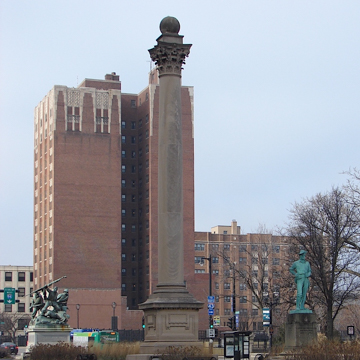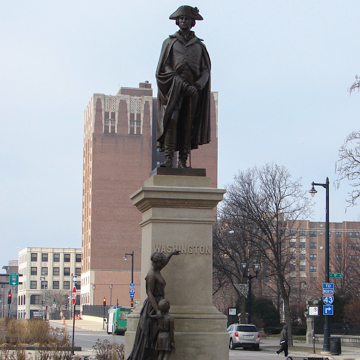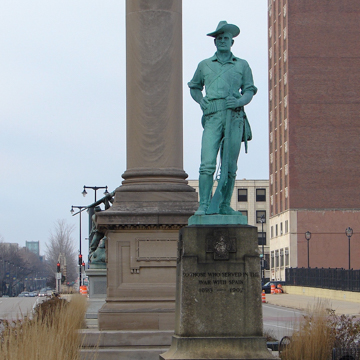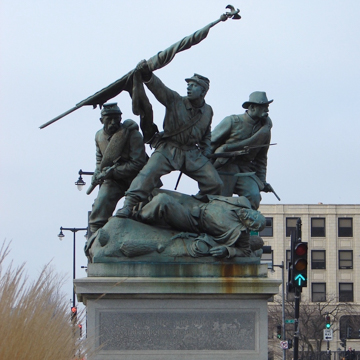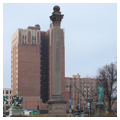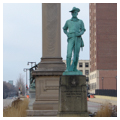The City of Milwaukee created Grand Avenue Park along this stretch of W. Wisconsin Avenue in 1874. In 1885, meatpacking heiress Elizabeth Plankinton donated $20,000 to pay for its first public monument, an Italian casting of Richard Hamilton Park’s bronze statue of George Washington. When the Panic of 1893 forced Senator John Mitchell to renege on his promise to fund a Civil War memorial, art patron and longtime Soldiers’ Aid Society leader Lydia Ely Hewitt raised funds for The Victorious Charge, designed by John Severinus Conway. It was added in 1898 to celebrate Wisconsin’s fiftieth statehood anniversary. In 1900, architect Alfred C. Clas’s sixty-five-foot-tall limestone design, The Midsummer Column, joined the assemblage during Milwaukee’s Midsummer Carnival. Spanish-American War veterans donated A. Koenig’s bronze statue of a soldier, To Those Who Served in the War with Spain, 1898–1902, erected at Grand Avenue Park’s west end in 1932 and moved to its current location in 1963.
You are here
Grand Avenue Park (Court of Honor)
If SAH Archipedia has been useful to you, please consider supporting it.
SAH Archipedia tells the story of the United States through its buildings, landscapes, and cities. This freely available resource empowers the public with authoritative knowledge that deepens their understanding and appreciation of the built environment. But the Society of Architectural Historians, which created SAH Archipedia with University of Virginia Press, needs your support to maintain the high-caliber research, writing, photography, cartography, editing, design, and programming that make SAH Archipedia a trusted online resource available to all who value the history of place, heritage tourism, and learning.















